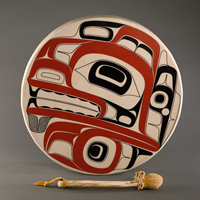1:3 Connecting Stories
Write a summary of three significant points that you find most interesting in the final chapter of If This is Your Land, Where are Your Stories?
I’d like to start by sharing that I found J. Edward Chamberlin’s If this is your land, Where are your stories? an extremely interesting read. I enjoyed how he encouraged the reader to open their mind in terms of seeing things from a different perspective and realizing that there is more than one truth. I believe that he sums this up well in his final chapter through the connection of legends and science, the use of visuals to get his points on contradiction across, and the explanation of what stories really do in terms of bringing people together or tearing them apart.
Chamberlin tells the Gitksan legend of the sacred mountain Stekyooden that was brought down by the spirit of the valley, a grizzly bear named Mediik. Mediik had warned the Gitksan people that they had become unmindful of their good fortune and had forgotten what nature had taught them. When they did not listen Mediik came roaring down the mountain bringing much of it with him covering the valley floor and destroying the village of Temlaxam, once a place of peace and prosperity to the people who lived there (Chamberlin 219).

It is this story of the grizzly and the slide that confirms the Gitksan peoples claim to the territory as it confirms the presence of their people in that place for millennia. Many years later when the Gitksan people asserted their claim to this land they turned to a scientific story that was told by geologists who were able to drill deep beneath the river that ran through the valley and confirm that the clay found sixty feet below matched that found high on the mountain slope (Chamberlin 220).
What I found most interesting about this story is the fact that even though the scientific story clearly confirms the legend, the Gitksan people still had to persuade the judge that both stories compliment each other and they do not discredit each other.
One of the other concepts I found very interesting as well as helpful in understanding Chamberlin’s ideas on the notion of contradicting truths was his example of the artist concept of “seeing with an innocent eye” (Chamberlin 221). The explanation that two artists may see the same object differently because of perspective or time of day makes it clear that both renditions are the truth even though they may appear different. When I read this part things really began to piece together for me and through the visual of the ship at anchor I was able to really understand how two different or contradictory stories can both be true.
The last concept I’d like to touch on is the idea of how and why stories bring people together and tear them apart. As Chamberlin mentions there are two stories, there are the chronicle events of how we came to be here and the ceremonies of belief of why we belong here (Chamberlin 227). The trouble and conflict begins when we try to compare the two stories because inevitably to believe one, most people think you must dismiss the other story as untrue. As mentioned above it is clear that both stories have their own truth. Once we realize that the others stories are not meant to hurt each other we can begin to have a respect for them and maybe stories can stop keeping people apart and start uniting all of us.
Works Cited
“Art Styles: Same Object, Different Approach.” ARTNAZ, 12 February 2013. Web. 22 January 2015.
Boxley, David R. Sm\’ooygidm Mediik – Chief of the Grizzly Bears Drum. Stonington Gallary, Seattle, Washington. Web. 22 January 2015.
Chamberlin, J. Edward. If This Is Your Land, Where Are Your Stories?: Finding Common Ground. Toronto: Vintage Canada, 2004. Print.
Peace and Environment News. The Peace and Environment Resource Centre. Athena. October 2001. Web. 21 May 2015. <http://207.112.105.217/PEN/1991-06/york.html>


